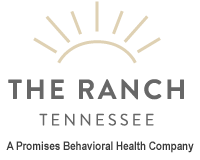By Edie Weinstein, MSW Most people affected by addiction in some way are familiar with the spiritual wisdom of traditional 12-step recovery programs known as the Serenity Prayer: “God grant me the serenity to accept the things I cannot change, the courage to change the things I can, and the wisdom to know the difference.” This saying can be used many times during the day as a grounding tool for people fighting addiction to remind them that there are things in life beyond their control, like traffic, the weather, the day of their death, and often the most challenging: other people and their choices. This prayer may be particularly useful when frustration runs high and the temptation to turn to habitual means is strong. An effective model of addiction treatment in line with this tool is acceptance and commitment therapy (ACT).
What Is ACT?
Acceptance and commitment therapy is a form of cognitive behavioral therapy that focuses on mindfulness to improve a person’s psychological flexibility so he or she can better engage in positive behavior during difficult thoughts or emotions. Through its core processes, ACT can help reduce dysfunctional thoughts, feelings and behaviors and decrease psychological distress by using “psychological intervention.” Created in 1986 by Steven C. Hayes, PhD, ACT is now heralded as an effective “third-wave” intervention, along with dialectical behavior therapy, mindfulness-based cognitive therapy, and mindfulness-based stress reduction. ACT is based on the importance of mindfulness, rather than “mindFULLNESS” – like so many dishes in an overflowing sink, which is a common mindset for many people. ACT is strengths-based and focuses on what a person can do well, what resources he or she has, and ways he or she can become more psychologically resilient. ACT doesn’t attempt to improve or alleviate symptoms, but rather aims to help the person stop obsessing over his or her symptoms, create new lifestyle patterns, and make healthier choices. It encourages being fully conscious in the present moment and maintaining or changing behavior based on what the moment involves. The framework of ACT is found in two terms: Problem = Something unhealthy, troublesome or unwanted Solution = A way of avoiding or getting rid of a problem ACT looks at a psychological problem in terms of something “physical” in the way, such as a rock that can be moved, or a detour taken around, or a garden plot that needs to be weeded so plants can grow.
The Role of ACT in Addiction Recovery
In the mind of someone facing addiction, the simplest way to a solution is to drink, drug or act out the problem away. But when tomorrow arrives, the problem is still there and has been made worse as a result of the damage done by the previous day’s choices. ACT helps an addicted person face the reality of his or her challenges without openly identifying with or overly focusing on them. An example of this would be a person who feels worthless as a result of chronic abuse and neglect, such as having grown up in a family in which addictions were left to run riot. He or she may have persistent personally degrading thoughts such as “I’m a loser and will never amount to anything” or “I’m damaged goods, who would want me?” An ACT intervention could include having the person initially address such thoughts as just that – thoughts or perceptions and not ultimate truth. This approach uses what’s referred to as a “struggle switch” that can be turned on and off at will. Swiss psychotherapist Carl Jung coined the phrase “What we resist persists,” describing the act of struggling against what is true or real. It’s this inner struggle that keeps people in the thick of depression, anxiety and addiction. ACT includes a component known as “clean discomfort” that encourages awareness and inspired action to face personal problems rather than practicing “dirty discomfort,” which maintains inner struggle and suffering.
ACT and Personal Pain
Much of what plagues those in the throes of addiction is a dysfunctional belief system. A Buddhist teaching speaks of the two “arrows” or forms of pain in life. The first type is physical pain – the inevitable pain we experience because we’re human. This could take the form of physical injury or the immediate feeling of loss when someone we love dies or a relationship ends. Mental pain is the second kind or “arrow” per se – the one we keep jabbing ourselves with by obsessing over the first arrow. When we believe in our emotional pains and embrace them as “my cancer,” “my divorce,” “my abuse,” or “my addiction,” they have power over us. “Embracing your demons” is another pain-in-life concept that, although horrifying to many people, carries with it a sense of humor that’s necessary. These “demons” in life may take the form of substances, relationship patterns, self-limiting beliefs or self-sabotaging health issues. We must see them before us with all of their sneering, snarling and gnashing of teeth. But when we confront them and accept that they’re there, they lose their strength, and their roaring becomes almost comical. However, if we avoid them or use substances as a way of attempting to subdue or ignore them, they feed off of this and will remain strong in our lives. The goal of ACT, therefore, is to create a rich and meaningful life while accepting the pain that inevitably goes with it.
The Human Relationship of ACT
Finally, one of the most dynamic aspects of ACT is that it places the therapist side by side with the person, not in a superior position. It allows the therapist to acknowledge that he or she is fully human as well and will walk the path right along with the person seeking help. ACT therapists possess the qualities of compassion, acceptance, empathy and respect. ACT training gives the therapist the latitude to devise his or her own treatment interventions rather than utilizing “book knowledge” and theory. Therefore, both the person and the therapist are empowered by ACT.


